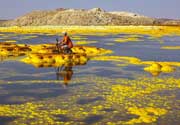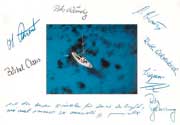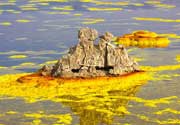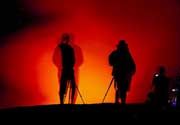| Volcano type | Complex stratovolcano minor activity or eruption warning |
| Location | Italy |
| Summit elevation | Currently about 3329 m (changing due to eruptive activity and collapse of its crater rims) |
| Etna volcano eruptions | Near continuously active; some major historic eruptions include 122 BC (large Plinian outbursts that created the small caldera of the "Cratere del Piano"), 1669 AD (devastating flank eruption that destroyed 15 villages and part of Catania), 1787 (Subplinian eruption and one of the most spectacular summit eruptions on record - lava fountains reportedly up to 3000 m high). Eruptions since 1950 (f: flank / s: summit activity): 1950 (s), 1950-51(f), 1955 (s), 1956 (s), 1956 (f), 1957 (s),1960 (s), 1961 (s), 1964 (f), 1964 (s), 1966 (s), 1966-1971(s), 1968 (f), 1971(f), 1972-1973 (s), 1974 (f), 1974-1975 (s), 1975-1977 (f), 1977-1978 (s), 1978 (f), 1979(s), 1979 (f), 1980 (s), 1981 (s), 1981 (f),1982-1983 (s), 1983(f), 1984(s), 1985(s), 1985(f), 1986(s), 1986-1987 (f), 1987(s), 1988(s), 1989(s), 1989(f), 1990 (s), 1991-93(f), 1995(s), 1996(s), 1997 (s), 1998 (s), 1999 (s), 2000 (s), 2001(s), 2001 (f), 2002(s), 2002-03(f), 2004-2005 (f), 2006 (s), 2007 (s), 2008-2009 (f), 2010(s), 2011-2013(s), 2014-18, 2018(f), 2019-ongoing (s) |
| Typical eruption style | Effusive (lava flows) and mildly explosive (strombolian) eruptions. Both summit and frequent flank eruptions, the latter seem to be occurring in clusters lasting few to a few tens of years. |



